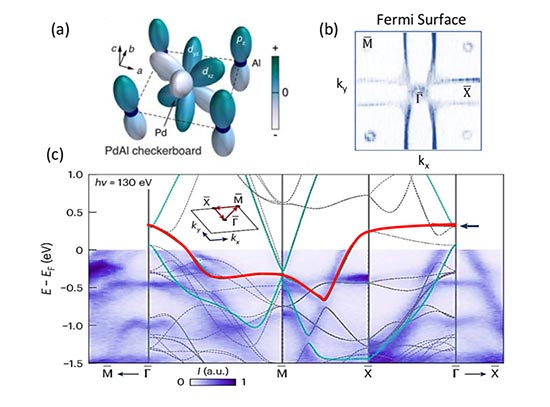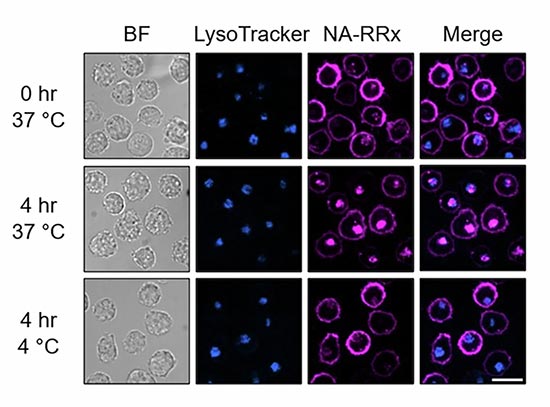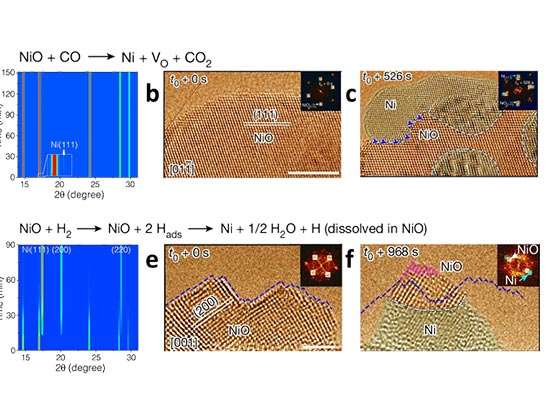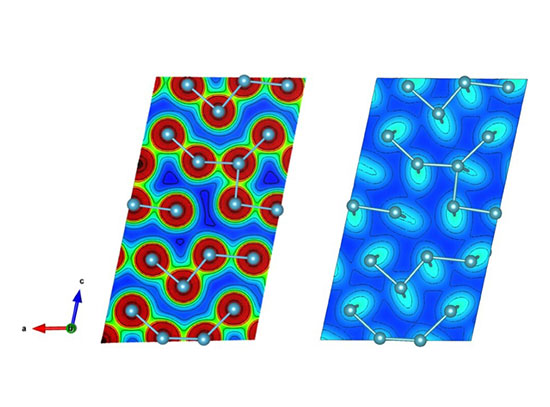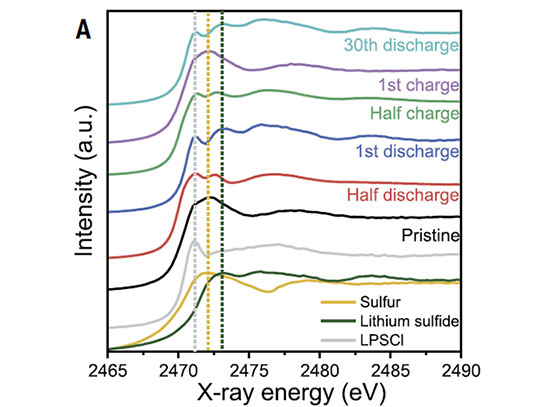Scientists Tune Soft Material to Change Shape in Multiple Ways
February 12, 2025
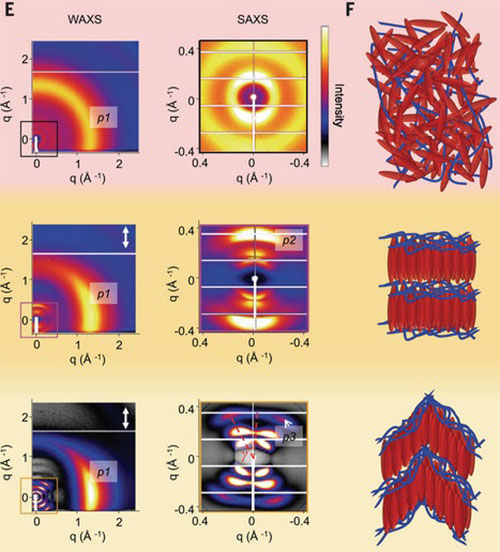 enlarge
enlarge
(Left) WAXS, (Center) SAXS, and (Right) schematics of molecular packing of the liquid crystal at 150°C (Top), 100°C (middle), and 25°C (bottom).
The Science
Scientists have developed a way to program liquid crystal elastomers with the ability to change shape in multiple directions using only temperature shifts.
The Impact
A single soft material that can achieve opposite deformations can be used in applications like soft actuators in bioinspired robotics, biomedical devices, and smart textiles.
Summary
Liquid crystal elastomers are soft materials that can change form in response to stimuli like heat or light. They combine the self-assembly property of liquid crystals with the elasticity of a polymer network. While soft materials found in nature are able to move in multiple directions, which is critical for motion in plants and animals, the reversible actuation exhibited by single material liquid crystal elastomers in response to one stimulus is typically unidirectional. Creating a material with uniform elastomers that can change shape in multiple ways in response to a single stimulus could pave the way for innovative new biomedical devices, lifelike robotics, and advanced textiles.
A team of researchers led by Harvard’s John A. Paulson School of Engineering and Applied Sciences have developed a way to tune liquid crystal elastomers that can deform in opposite directions in response to heat. The team used simulations to theoretically model the system and then arranged liquid crystal monomers to form polymer chains. To validate the phase behavior, the team performed Wide Angle X-ray Scattering (WAXS) and Small Angle X-ray Scattering (SAXS) measurements in real-time at the Soft Matter Interfaces (SMI) beamline at the National Synchrotron Light Source II (NSLS-II)—a U.S. Department of Energy (DOE) Office of Science user facility at DOE’s Brookhaven National Laboratory. At room temperature, the polymers formed a chevron pattern, but flattened out as the temperature rose to 100°C. At 150°C, the polymers deformed into a pattern resembling random coils.
When scaled up, this technology could be employed in technologies using soft materials that mimic movement found in nature.
Download the research summary slide (PDF)
Related Links
Press: Shape-changing soft material for soft robotics, smart textiles and more
Paper: Programming liquid crystal elastomers for multistep ambidirectional deformability
Contact
Michael M. Lerch
Harvard University, University of Groningen
m.m.lerch@rug.nl
Joanna Aizenberg
Harvard University
jaiz@seas.harvard.edu
Publications
Yuxing Yao, Atalaya Milan Wilborm, Baptiste Lemaire, Foteini Trigka, Friedrich Stricker, Alan H. Weible, Shucong Li, Robert A. Bennett, Tung Chun Cheung, Alison Grinthal, Mikhail Zhernenkov, Guillaume Freychet, Patryk Wasik, Boris Kozinsky, Michael M. Lerch, Xiaoguang Wang, Joanna Aizenberg, Programming liquid crystal elastomers for multistep ambidirectional deformability. Science 386,1161-1168 (2024).DOI:10.1126/science.adq6434
Funding
This work was supported by the US Department of Energy (DOE), Office of Science, Basic Energy Sciences (BES), under award number DE-SC0005247 (experiment and characterization) and the Harvard University Materials Research Science and Engineering Center (MRSEC) under award number DMR-2011754 (theory and computational studies). M.M.L. thanks The Netherlands Organization for Scientific Research (NWO VENI grant number VI.Veni.202.158). F.S. is supported by the Deutsche Forschungsgemeinschaft (DFG) in the form of a Walter Benjamin Fellowship (project number 520766332). This research used SMI 12-ID of the National Synchrotron Light Source II, a US DOE Office of Science User Facility operated for the DOE Office of Science by Brookhaven National Laboratory under contract number DE-SC0012704.
2025-22359 | INT/EXT | Newsroom




